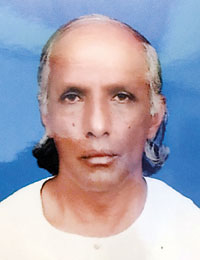Sunday Times 2
Opening a window to Little England’s secret heart
View(s):Nuwara Eliya is so deeply engraved in our minds as a misty holiday retreat- a replica of an English village that sprang up in the 19th Century- that we overlook the town’s unique identity- with epigraphical evidence showing it was civilized as far back as the 9th and 10th Century- far from being a British invention.

Shelton Hettiarachchi
Well-known journalist Shelton Hettiarachchi, born and bred in the hill station, is as well-equipped as anyone to provide a handbook to the traveller, collating in a slim volume all the major attractions of Nuwara Eliya. It opens a window to Little England’s secret heart, with so many quaint or intriguing must-sees, both natural and man-made.
The book opens with the stone inscription that is now preserved at the Nuwara Eliya Divisional Secretariat, greeting the visitor who enters the premises. It is disputed where the lithic pillar was originally situated, though expert opinion favours the Harasbedda village, for the jungle that rises up behind the village has remains of a primary fortress- belonging to the Anuradhapura period! The inscription, which is not fully legible, has to do with special privileges being granted to certain outlying villages in the area.
 The religious landmarks, set against dreamy alpine beauty, are among the lesser-known and visited. The Holy Trinity Church, 166 years old, is a beautiful, stocky Anglican edifice with a magnificient pipe organ. There is also the Sita kovil- the only shrine in the world dedicated to the heroine of the Ramayana- believed to be a miraculous place, abounding with myth and legend. The Gayathri Peedam, founded by Sri Murugesu Maharishi, is visited by people of all creeds. The main Buddhist shrine is the Sri Maha Vihara, Bambarakelle, founded in the early 1880s. The grand Masjidul Kabeer mosque is an imposing sight in the town. The book gives a coherent description, illustrations as well as directions for all sites.
The religious landmarks, set against dreamy alpine beauty, are among the lesser-known and visited. The Holy Trinity Church, 166 years old, is a beautiful, stocky Anglican edifice with a magnificient pipe organ. There is also the Sita kovil- the only shrine in the world dedicated to the heroine of the Ramayana- believed to be a miraculous place, abounding with myth and legend. The Gayathri Peedam, founded by Sri Murugesu Maharishi, is visited by people of all creeds. The main Buddhist shrine is the Sri Maha Vihara, Bambarakelle, founded in the early 1880s. The grand Masjidul Kabeer mosque is an imposing sight in the town. The book gives a coherent description, illustrations as well as directions for all sites.
The natural splendours that make N’Eliya so alluring include Lake Gregory, the Hakgala botanical garden, the Moon Plains, the Galway’s Land National Park, the Lover’s leap falls, the Pidurutalagala mountain and the Victoria Park. The book provides all that a visitor needs to know about these getaways, coupled with illustrations that evoke the cloudy montane beauty of the area.
Running through the book like a thread you trace in each entry is the history of Nuwara Eliya, from the legendary (or mythical) epoch of Ravana to the hazy ancient period and the Middle Ages. You pick from there the establishment of a military holiday retreat by the British, the advent of the ‘pioneer’ Samuel Baker who established a thousand-acre farm with English livestock and then the first churches to the first temples and mosques.
Interspersed among the pages is also the story of Nuwara Eliya’s cozy and grand hotels and such iconic landmarks as the story-book post office, as well as the tombstone of Major Thomas William Rogers, who shot and killed 1,500 elephants and was struck by lightning. Local legend has it that the tomb itself becomes a victim of lightning every year, as divine retribution.
The book also has an addendum of places of interest around Nuwara Eliya, including the little-known Mandaram-nuwara, where, in the late 16th and the early 17th Century, a Shaivite priest held the region in terror. Lucid and readable, with its beautiful colour plates, Nuwara Eliye Salakunu fits into the traveller’s backapck as easily as it sits in a bookshelf as a guide for quick reference.
Book facts:
Nuwara Eliye Salakunu by Shelton Hettiarachchi.
Reviewed by Yomal
Senerath-Yapa

